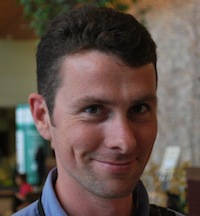 Alexander Howard, O’Reilly Media’s Gov 2.0 correspondent, came to Cambridge Tuesday to give a talk at Harvard’s Berkman Center about how the technologies that shaped the Internet have transformed how societies communicate and how government interacts with its citizens. Howard said citizen hackers and journalist are playing an important role in broadening the open data movement by building applications and other services that governments alone could not create. The future of how we use data will be social and mobile, Howard said, as the focus turns to how we connect with others and improve our communities.
Alexander Howard, O’Reilly Media’s Gov 2.0 correspondent, came to Cambridge Tuesday to give a talk at Harvard’s Berkman Center about how the technologies that shaped the Internet have transformed how societies communicate and how government interacts with its citizens. Howard said citizen hackers and journalist are playing an important role in broadening the open data movement by building applications and other services that governments alone could not create. The future of how we use data will be social and mobile, Howard said, as the focus turns to how we connect with others and improve our communities.
I covered the event in a liveblog, you can also watch a replay of Howard’s talk in Berkman’s interactive archive.